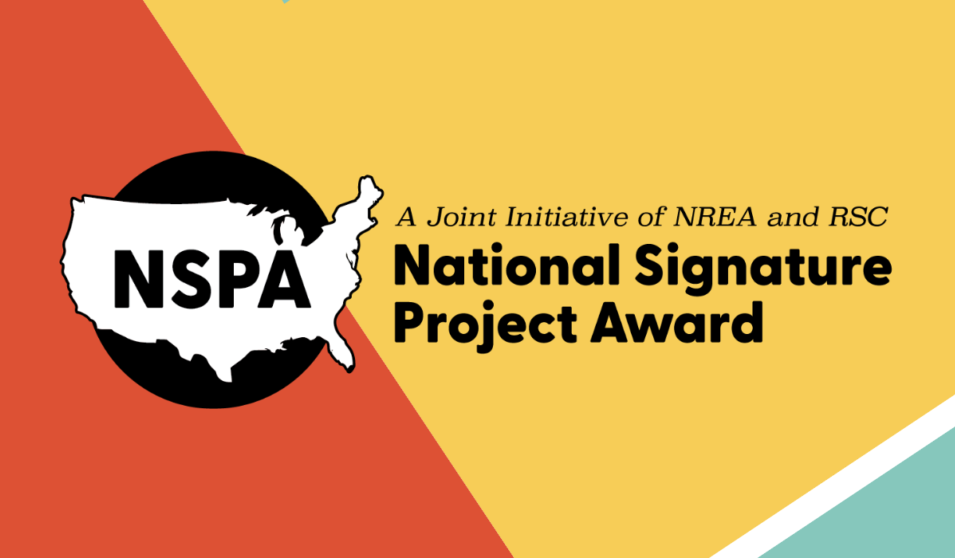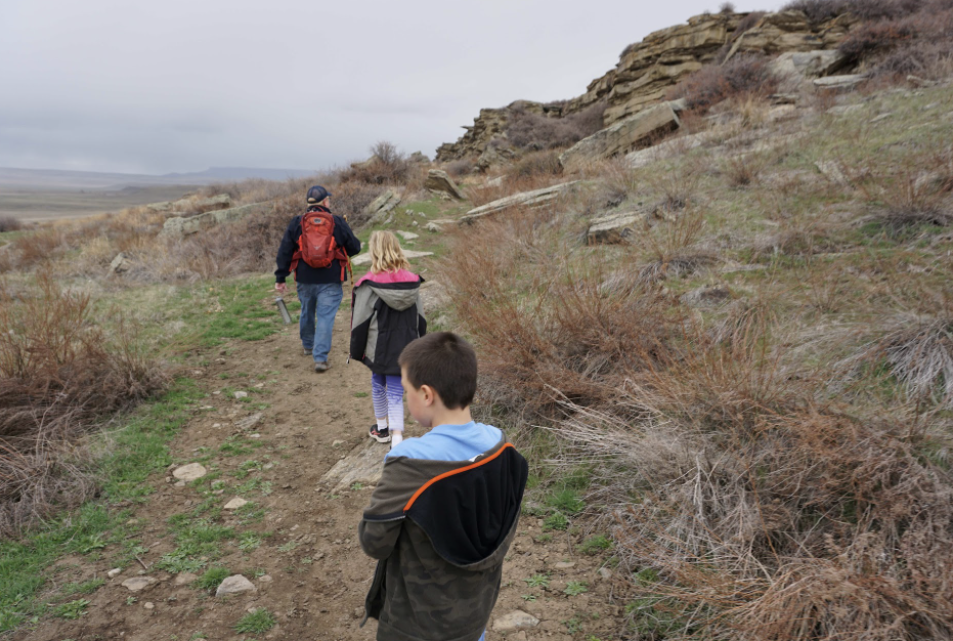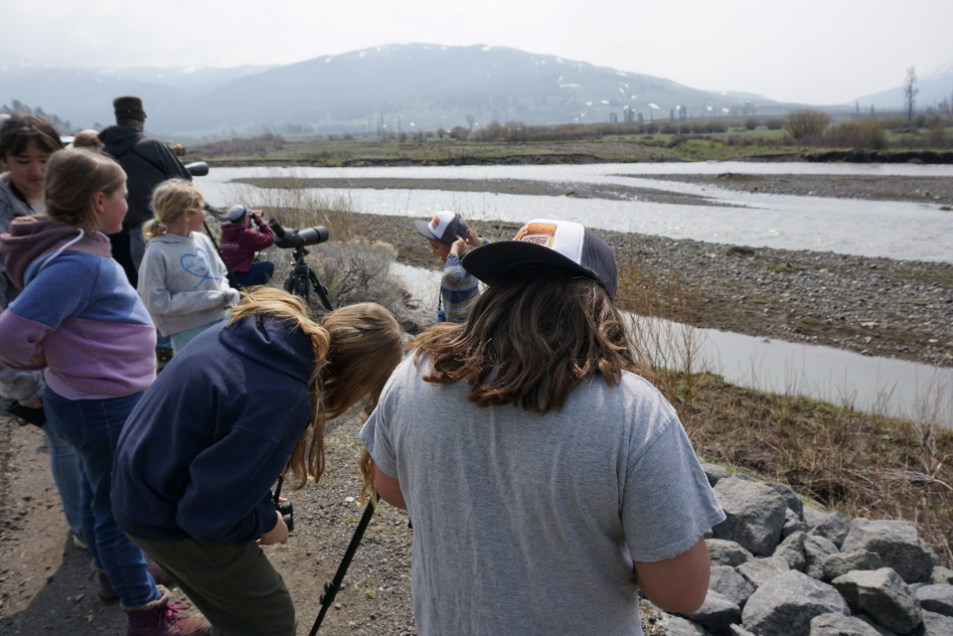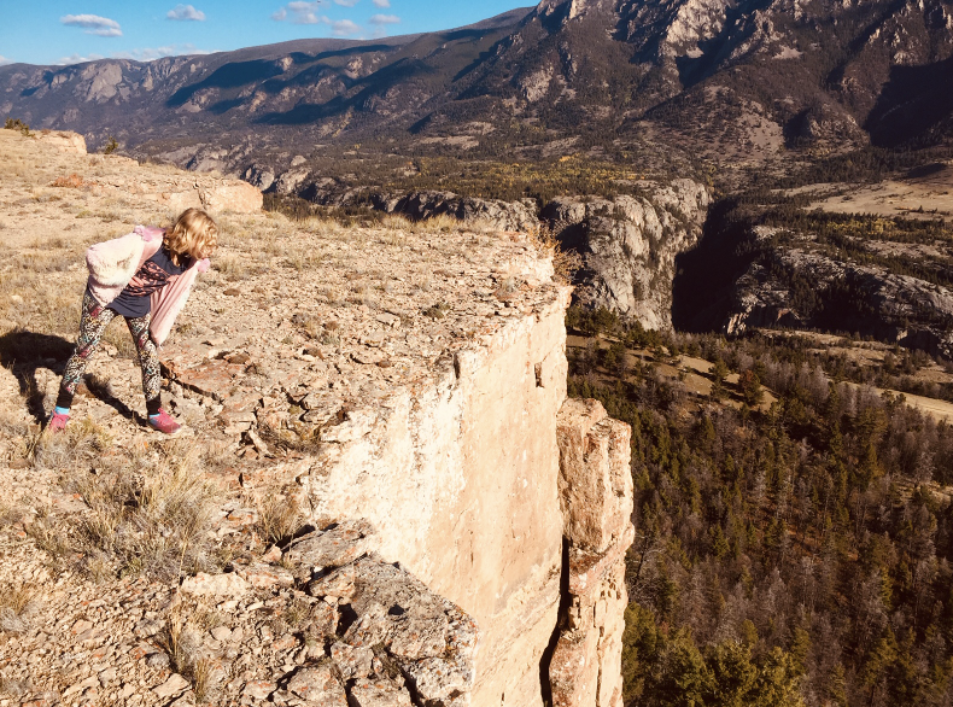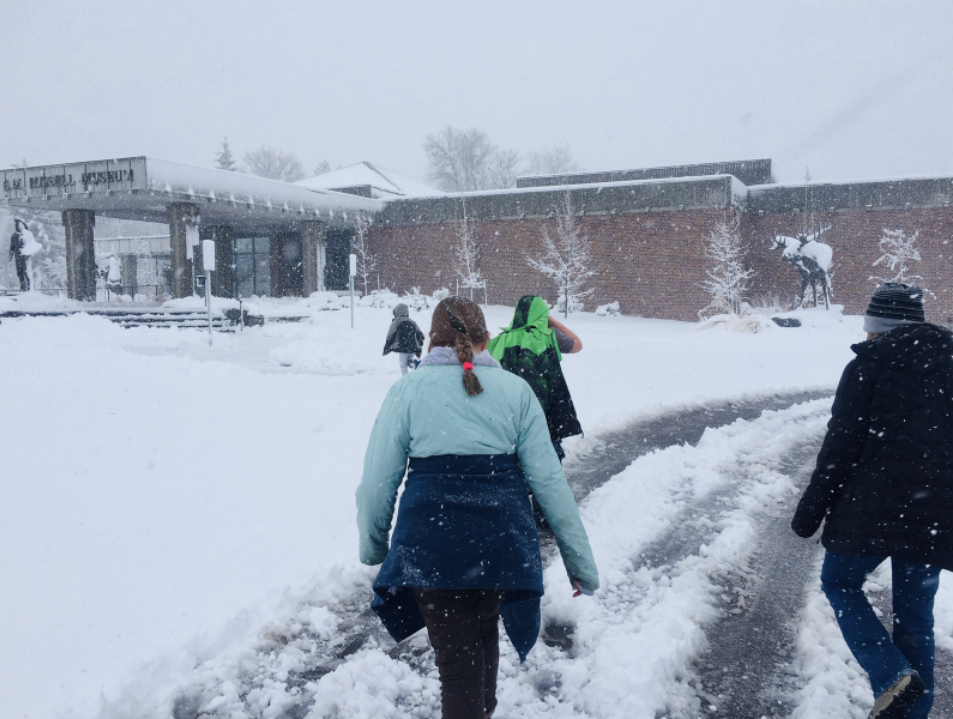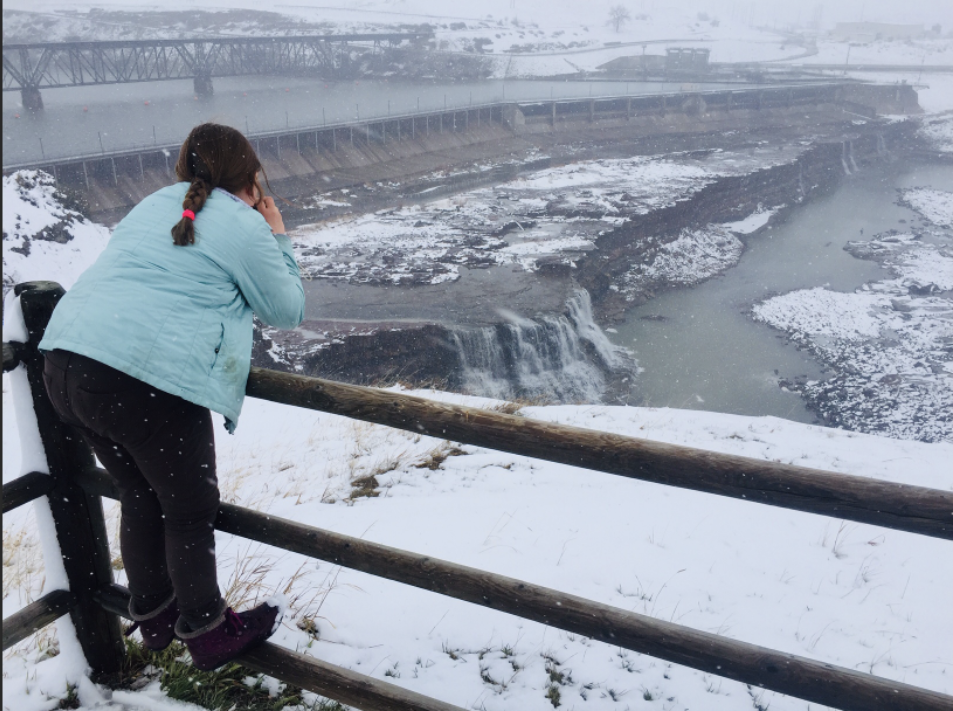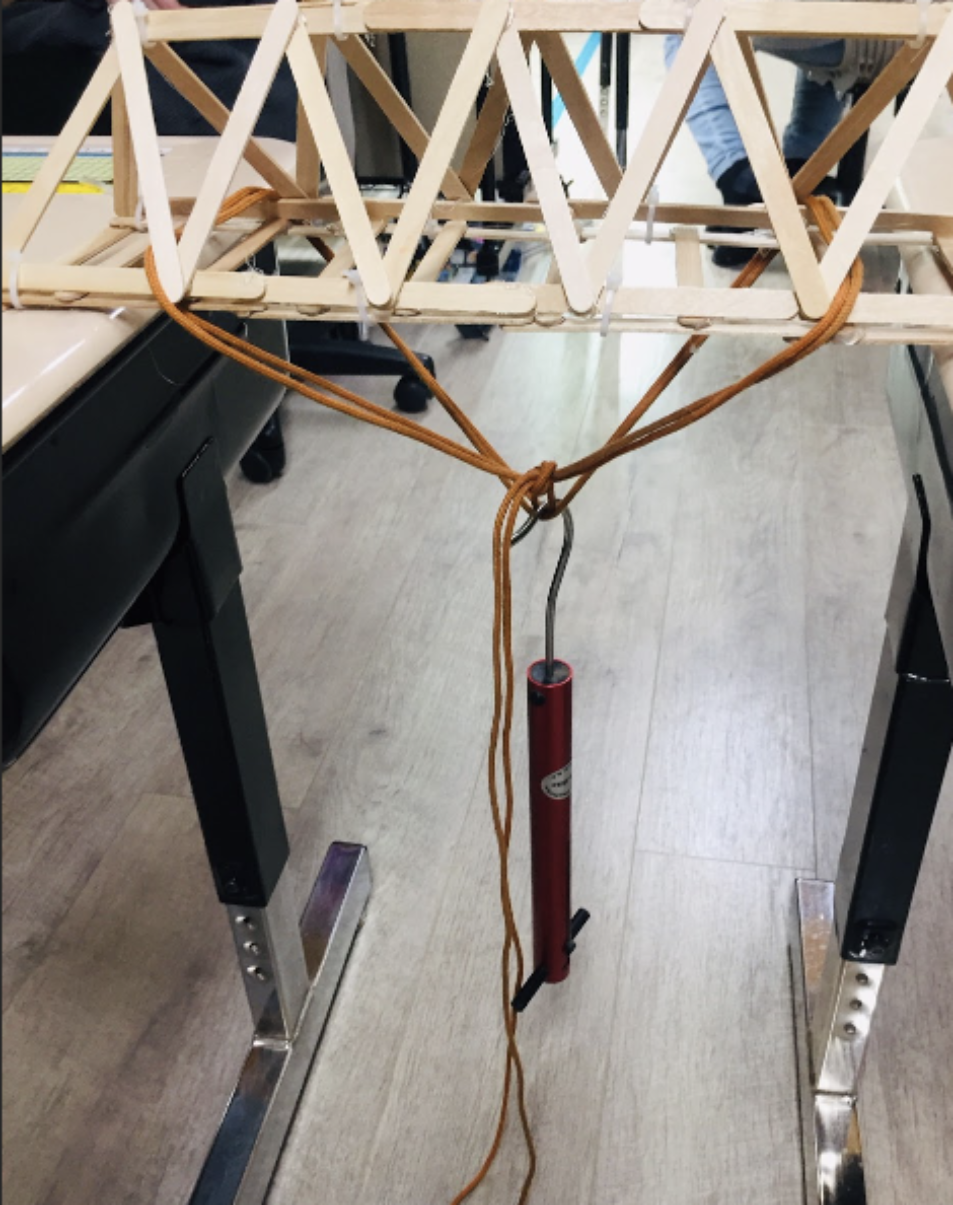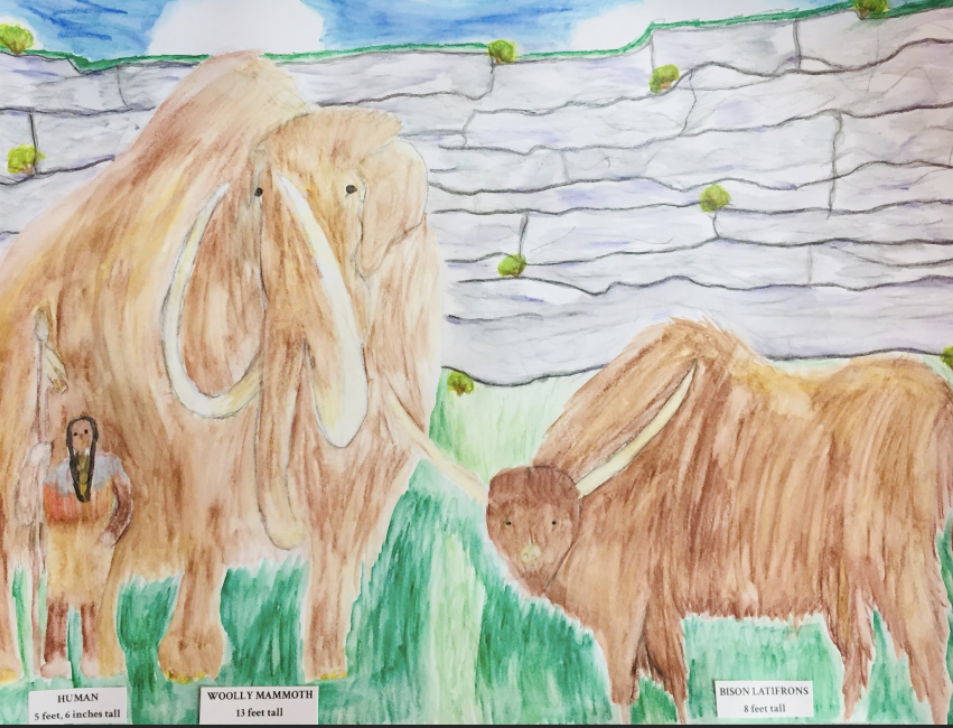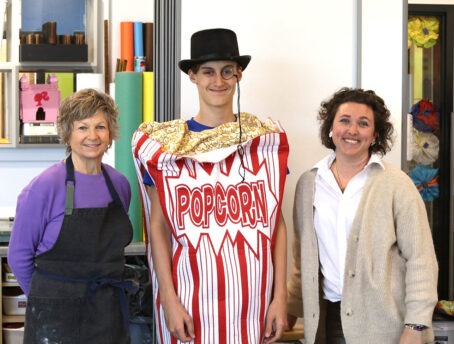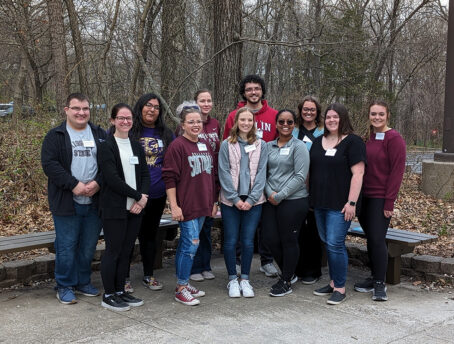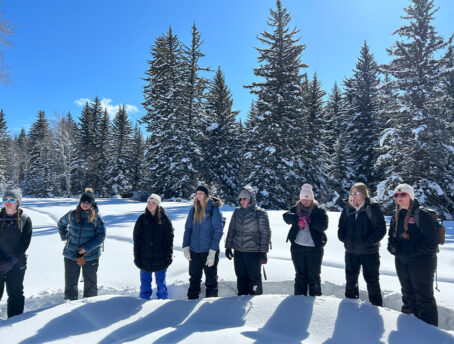Each year, the National Rural Education Association (NREA) and Rural Schools Collaborative (RSC) accept applications for the National Signature Project Award (NSPA), a $2,500 grant awarded to an outstanding and innovative classroom project anywhere in rural America that exemplifies the very best in place-based education.
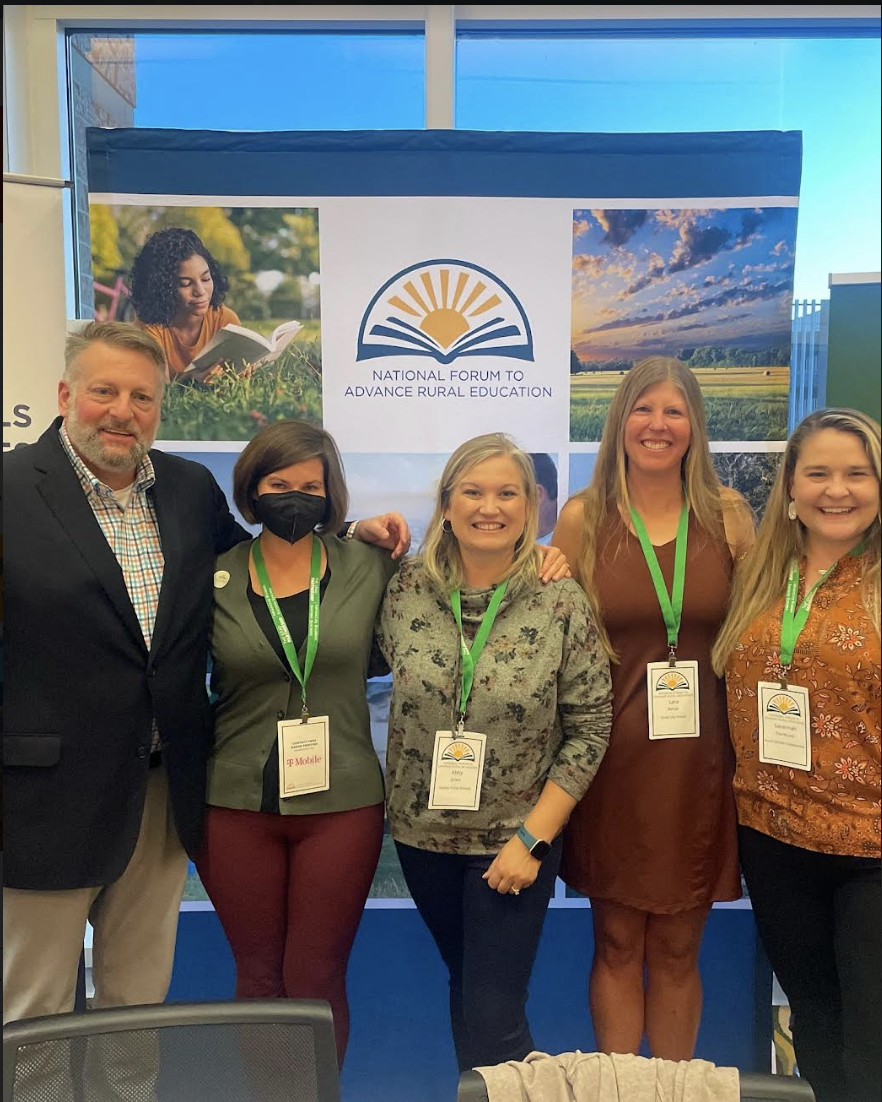
In 2022, for the first time RSC and the NREA chose to award two additional rural teachers with $1,500 toward their individual place-based education projects. Rural Schools Collaborative and National Rural Education Association also offer recipients’ travel and registration fees for attendance to the annual National Forum to Advance Rural Education.
We are thrilled to be able to triple the impact of this program, and to have the opportunity to share three amazing stories of innovative rural school projects in action. The 2022-23 National Signature Project Award recipients, Lara Belice, Abby Jones and Chris Robinson have generously shared with us the stories and outcomes of their student’s place-based journeys. We invite you to learn more about their projects from this past school year, and imagine how schools in your area can similarly connect community and classroom in ways that benefit students:
Lara Belice, Cook City, Montana
2022-23 Signature Project Award Recipient, “U.S. History through a Bison Lens” Project.
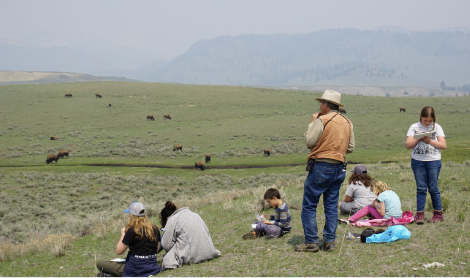
The Bison Lens project started local and finished local, but encompassed the world and spanned eons. Cooke City’s K-8 one-room school is located at the southern end of Park County, Montana, four miles from the Northeast Entrance to Yellowstone National Park. At the northern end of Park County, the Anzick archeological site is the location of the oldest known human burial in North America. Using spears tipped with large, fluted stone projectile points, the family of the 12,600 year old buried Clovis Child would have hunted the Pleistocene megafauna - mammoths, mastodons, and massive ancient bison - that once roamed across the landscape known today as the Greater Yellowstone Ecosystem. An educational trunk offered by the Montana Historical Society connected the students to replicas of the tools and artifacts found at this important site.
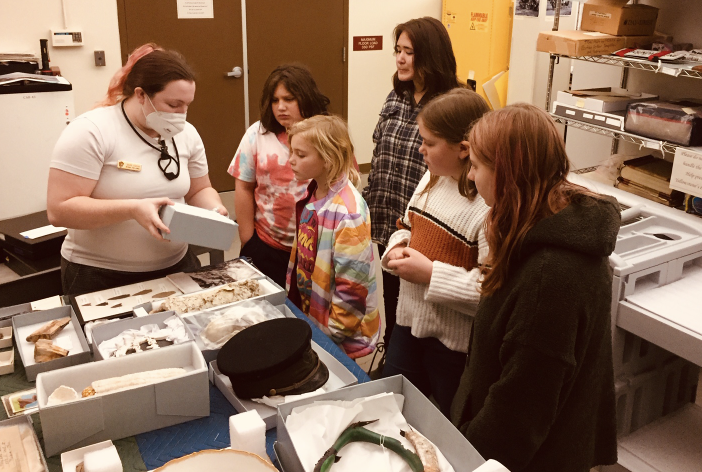
A separate trunk from the Museum of the Rockies contained the preserved parts of a bison accompanied by a variety of lessons that allowed Belice’s students to intimately understand the significance of bison to the Plains tribes for food, shelter, tools, and cultural practices. These lessons all underscored the necessity of bison to be present on the landscape as keystone species and for an intact ecosystem.
Various field trips within Park County, Montana were completed throughout the school year to provide hands-on connections to the classroom learning. A five-day field trip to north central Montana offered a deeper understanding of the importance of bison throughout the history of the United States. At First Peoples Buffalo Jump State Park, Belice’s students completed a ranger-guided hike to the top of one of the largest buffalo cliff jumps in North America, used by Native peoples for more than 2,000 years prior to Lewis and Clark’s expedition through modern-day Montana.
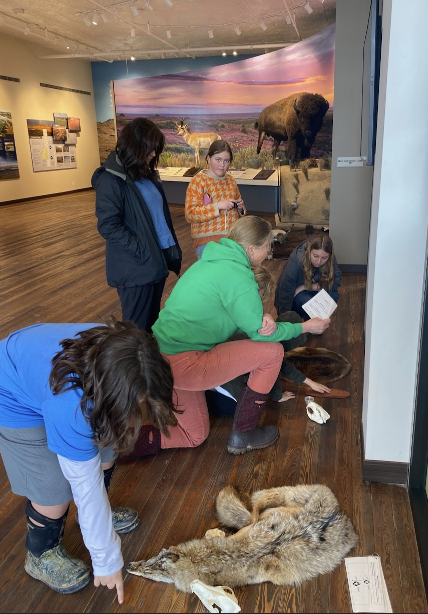
Students then toured the Lewis and Clark Interpretive Center in Great Falls and the art of Montana’s cowboy artist Charlie Russell, who sculpted and painted the days of the wild landscape before America’s Westward Expansion took hold. The trip ended at the National Discovery Center, a new museum in Lewistown created by the American Prairie Organization. With the creation of this new museum, the American Prairie Organization aspires to create the largest nature reserve in the United States in order to provide enough connected acres of land to allow free-roaming bison to return and engineer the landscape for the purpose of restoring and preserving the prairie ecosystem.
Upon return to Yellowstone National Park in mid May, students explored with local bison expert Jim Garry to observe this year’s (2023) red dogs - the newest generation of genetically pure wild bison. The Yellowstone bison represent the most important herd of bison, as Yellowstone is the only location in the United States where bison have lived continuously since prehistoric times. These baby bison are the lineage of the wild bison who roamed across this landscape for thousands of years. They still exhibit the wild behavior of their ancient ancestors. The Yellowstone bison wander into Cooke City and remain here year round. The oldest bulls graze in town - a daily reminder to Belice’s students of the United States’ layered and complex history that is intricately entwined with the story of bison. A story of extinction, recovery, and now conservation, the Yellowstone bison herd are making their way back to tribal lands and nature preserves across the United States and Canada. To remind the local community and visitors of the significance of bison on this landscape, the Cooke City students have created a pictorial bison timeline, spanning from 13,000 years ago to present day, to be displayed at the local United States Postal Service Cooke City office.
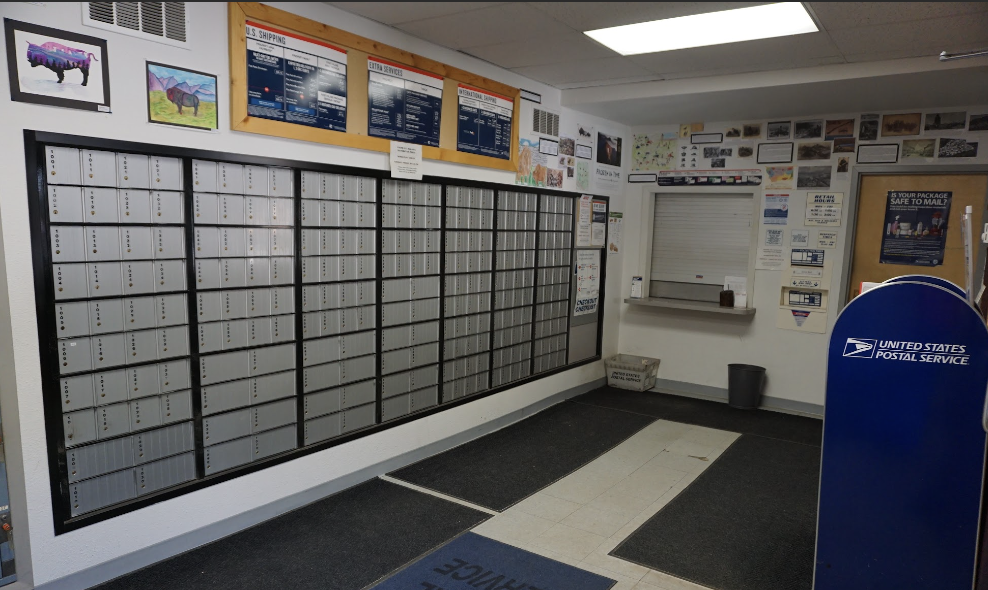
Abby Jones Gibbon, Nebraska
2022-23 National Signature Project Award: Runner Up, “Flavors & Foliage”
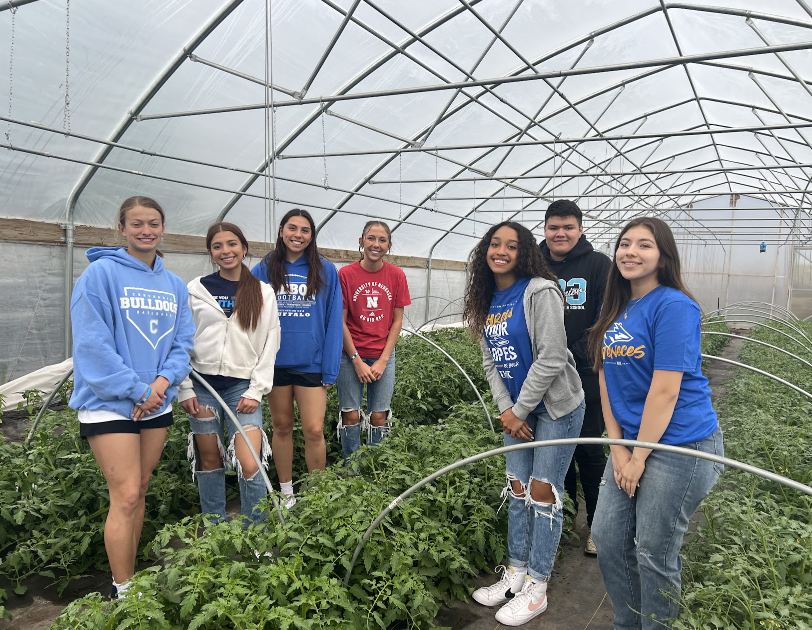
Abby Jones’ project “Flavors & Foliage - An International Greenhouse at Our School” allowed her students to learn about greenhouses, aquaponics, cooking with fresh produce, all while practicing creativity and flexibility during the 2022-23 school year. Jones and her students started a greenhouse on their school campus. During this process, Jones and her students spent time at the Little Town Gardens, a local greenhouse where they learned about aquaponics, why tilapia are the most sustainable fish, how to do trellis gardening, that peppers are actually perennials, how to care for plants with aphids, and so much more.
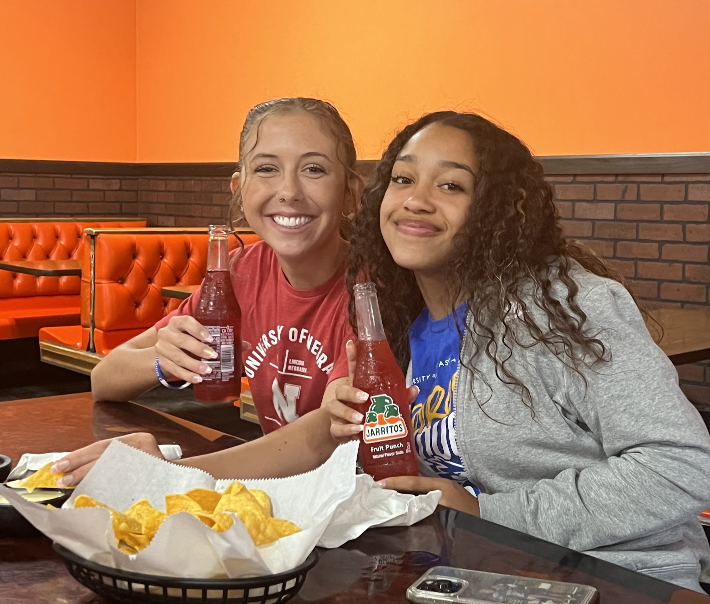
After working with Mrs. Benge and Little Town Gardens, Senior Heiry Hernandez said “I found it fascinating to learn that warmer temperatures can make peppers taste spicier while colder temperatures are more mild. I’d really never given any thought to how temperature can influence flavor in foods.”
Senior Kristen Holcomb said, “The aquaponics was fascinating. I never knew that you could use fish waste to fertilize and grow plants.”
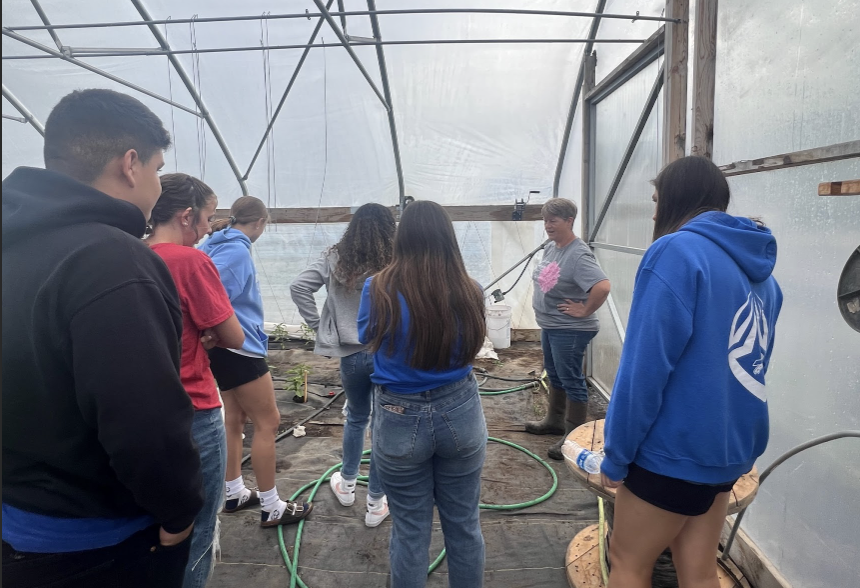
Through this project, Jones and the school were able to foster a positive relationship with the owners of Little Town Gardens and have already started making plans for what they will grow in the greenhouse collaboratively for the 2023-2024 school year.
In addition, they were able to visit Mary Chuy’s local restaurant and see where authentic tortillas and breads are made, converse in Spanish, and sample authentic cuisine. Finally, Abby and her students were able to purchase fresh ingredients to make homemade salsa and guacamole.
Paola Murillo said, “I’ve never eaten salsa with fresh tomatillos. I’ve always had cooked tomatillos.” The experience of cooking with fresh produce allowed students to try things they’d never tasted before, and to explore new combinations of vegetables - all grown locally, too.
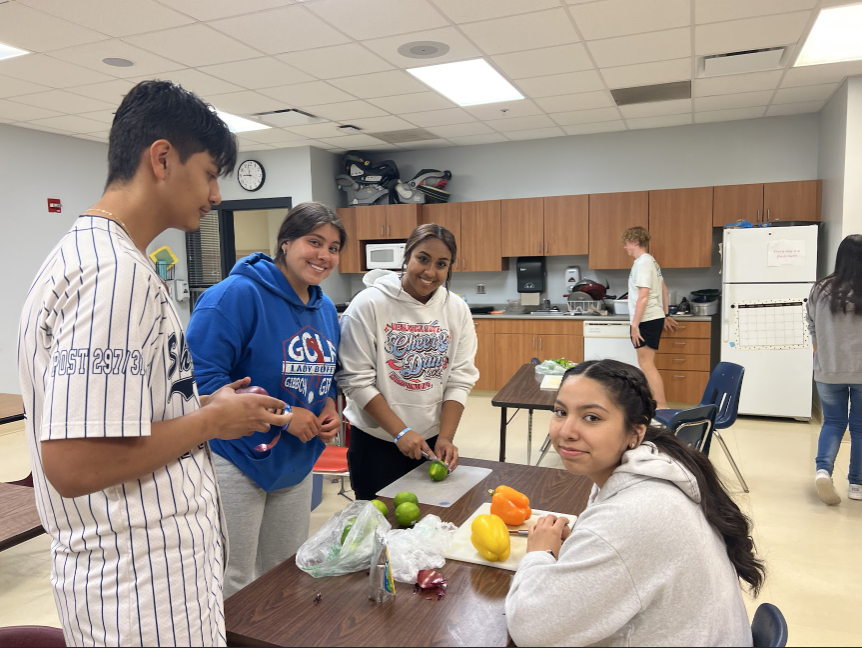
Chris Robinson Lynn, Indiana
2022-23 National Signature Project Award: Runner Up, “Farm to Fork”
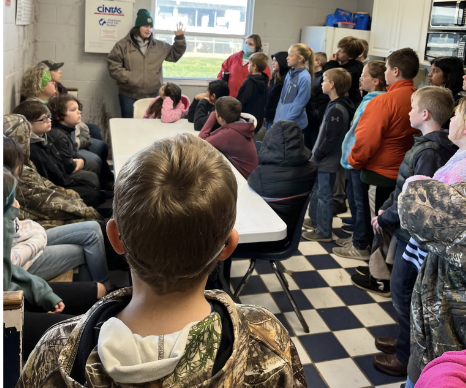
Chris Robinson guided her students through various units during the 2022-23 school year, with the goal and purpose of exposing students to the many opportunities that are available in their rural community.
Chris describes her school as “nestled in the center of an agricultural community.” During the project she says, “We enjoyed partnering with our local Purdue Extension staff to bring in more aspects and enhance this journey into agriculture.”
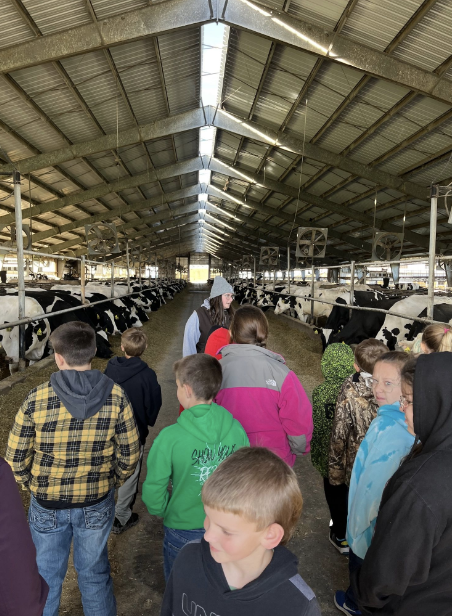
The first unit of study was dairy. Chris and her students traveled by bus to visit a large local dairy farm run by a local family that has been around for many generations. Students learned about feeding and milking schedules, watched the process from milking to pasteurization, and even sampled some of the well known yogurt the milk helps to produce. Chris brought the field trip experience back to the classroom by charting different types of milk with her students, and concluded the dairy unit of study by making ice cream by hand.
In the natural resources woods unit, students learned about the vast amount of products that are made from wood, and the process that trees and lumber go through to make items.
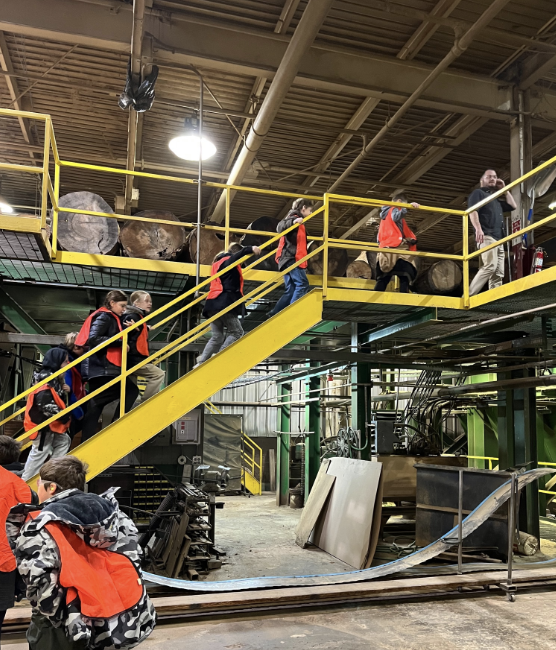
The field trip to a large, local lumber and shipping yard only took Chris and her students 18 miles from the school. Students gathered on a cat walk in a factory and watched the process that the trees go through, all from above. Students also visited a local tree farm to see a wide variety of trees raised only two miles from the school. Students brought their newly learned skills and information back to the classroom by making bird feeders out of pinecones to hang around their school, and concluded the unit by making pancakes and enjoying real maple syrup.
The spring unit included a poultry study. The students were eager to help create chick headbands that the local Purdue staff needed for an annual Ag Day. Students brought their real-world experiences back into the classroom to learn about parts of the egg, incubating eggs to have chicks, the many stages the eggs go through, and then the final product of raising chicks to become chickens.
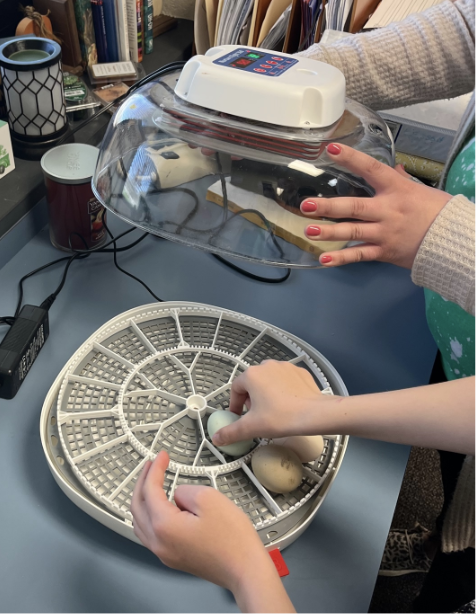
Both 5th grade classrooms were able to raise chickens, and often enjoyed visitors from grades ranging from Kindergarten to 6th grade, to check in on their progress. The student body greatly enjoyed the chickens, and the experience gave the 5th graders the opportunity to become advocates of agriculture and teach their peers. In the culminating activity for the poultry unit, Chris’ students learned about food safety in handling raw chicken and cooking it to the correct temperature.
To conclude the project, Chris and the 5th grade students became 4-H members and created animal science posters that were judged and displayed at our county fair. This summer, a few of the students’ posters were chosen to be presented at the Indiana State Fair. Chris was able to show her rural students a wide array of opportunities, all within a twenty mile radius of their school and in their hometown. This sense of community and pride, instilled at a young age, is so impactful for rural youth, and the future vitality.
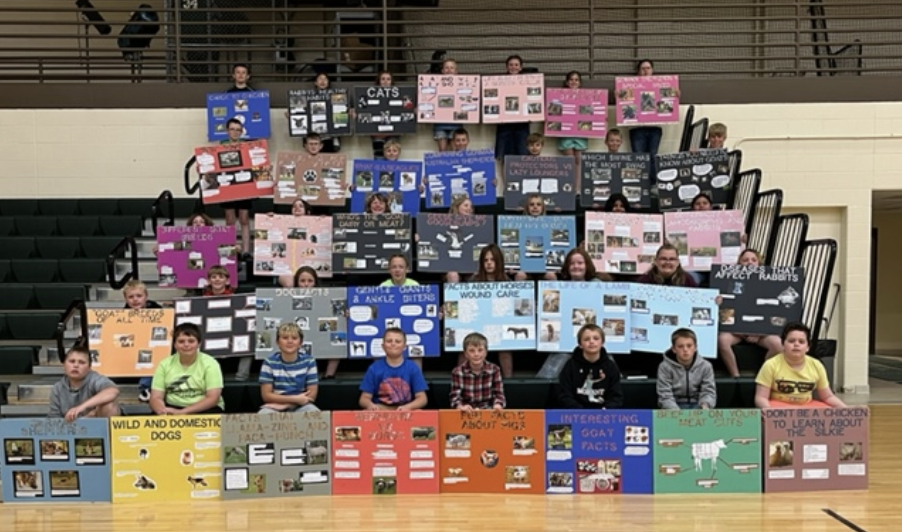
Thank you to the National Rural Education Association for co-sponsoring this program. NREA is the nation's oldest rural education organization, and we are honored to partner with them in this effort.
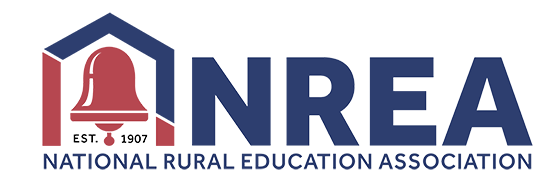
Learn more about our 2023-24 National Signature Project Award recipients, and their place-based education projects.
The 2024-25 National Signature Project Award will be accepting applications in the spring of 2024.

